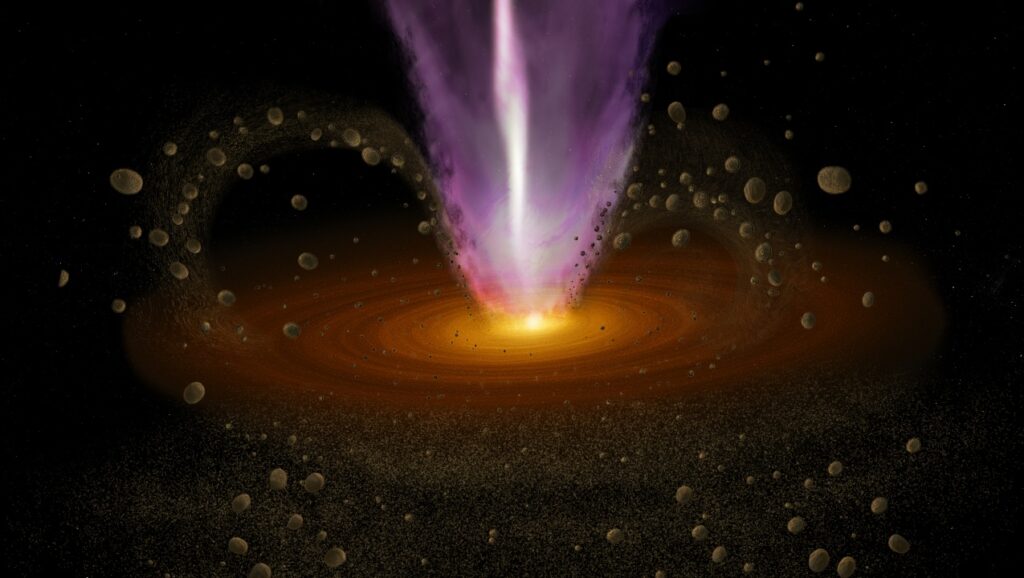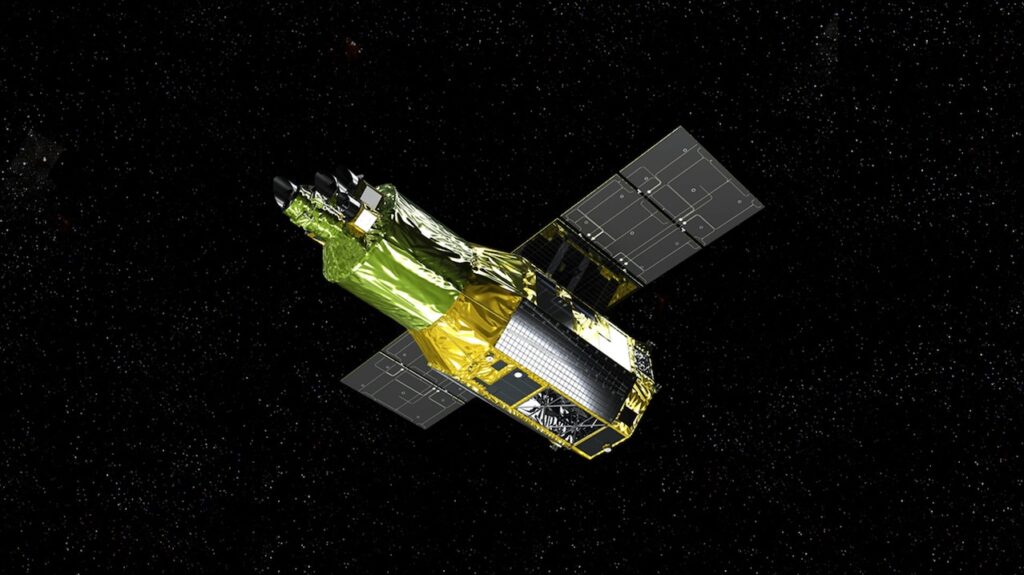Spatial Variations In Aromatic Hydrocarbon Emission In A Dust-rich Galaxy

Dust grains absorb half of the radiation emitted by stars throughout the history of the universe, re-emitting this energy at infrared wavelengths.
Polycyclic aromatic hydrocarbons (PAHs) are large organic molecules that trace millimeter-size dust grains and regulate the cooling of the interstellar gas within galaxies. Observations of PAH features in very distant galaxies have been difficult due to the limited sensitivity and wavelength coverage of previous infrared telescopes. Here we present JWST observations that detect the 3.3um PAH feature in a galaxy observed less than 1.5 billion years after the Big Bang.
The high equivalent width of the PAH feature indicates that star formation, rather than black hole accretion, dominates the infrared emission throughout the galaxy. The light from PAH molecules, large dust grains, and stars and hot dust are spatially distinct from one another, leading to order-of-magnitude variations in the PAH equivalent width and the ratio of PAH to total infrared luminosity across the galaxy.
The spatial variations we observe suggest either a physical offset between the PAHs and large dust grains or wide variations in the local ultraviolet radiation field. Our observations demonstrate that differences in the emission from PAH molecules and large dust grains are a complex result of localized processes within early galaxies.
Justin S. Spilker, Kedar A. Phadke, Manuel Aravena, Melanie Archipley, Matthew B. Bayliss, Jack E. Birkin, Matthieu Bethermin, James Burgoyne, Jared Cathey, Scott C. Chapman, Hakon Dahle, Anthony H. Gonzalez, Gayathri Gururajan, Christopher C. Hayward, Yashar D. Hezaveh, Ryley Hill, Taylor A. Hutchison, Keunho J. Kim, Seonwoo Kim, David Law, Ronan Legin, Matthew A. Malkan, Daniel P. Marrone, Eric J. Murphy, Desika Narayanan, Alex Navarre, Grace M. Olivier, Jeffrey A. Rich, Jane R. Rigby, Cassie Reuter, James E. Rhoads, Keren Sharon, J.D. T. Smith, Manuel Solimano, Nikolaus Sulzenauer, Joaquin D. Vieira, Axel Weiss, Katherine E. Whitaker
Comments: Published in Nature 5 June 2023 at this https URL. MIRI MRS reduction notebook is available at this https URL
Subjects: Astrophysics of Galaxies (astro-ph.GA)
Cite as: arXiv:2306.03152 [astro-ph.GA] (or arXiv:2306.03152v1 [astro-ph.GA] for this version)
https://doi.org/10.48550/arXiv.2306.03152
Focus to learn more
Related DOI:
https://doi.org/10.1038/s41586-023-05998-6
Focus to learn more
Submission history
From: Justin Spilker
[v1] Mon, 5 Jun 2023 18:06:16 UTC (1,358 KB)
https://arxiv.org/abs/2306.03152
Astrobiology, Astrochemistry








